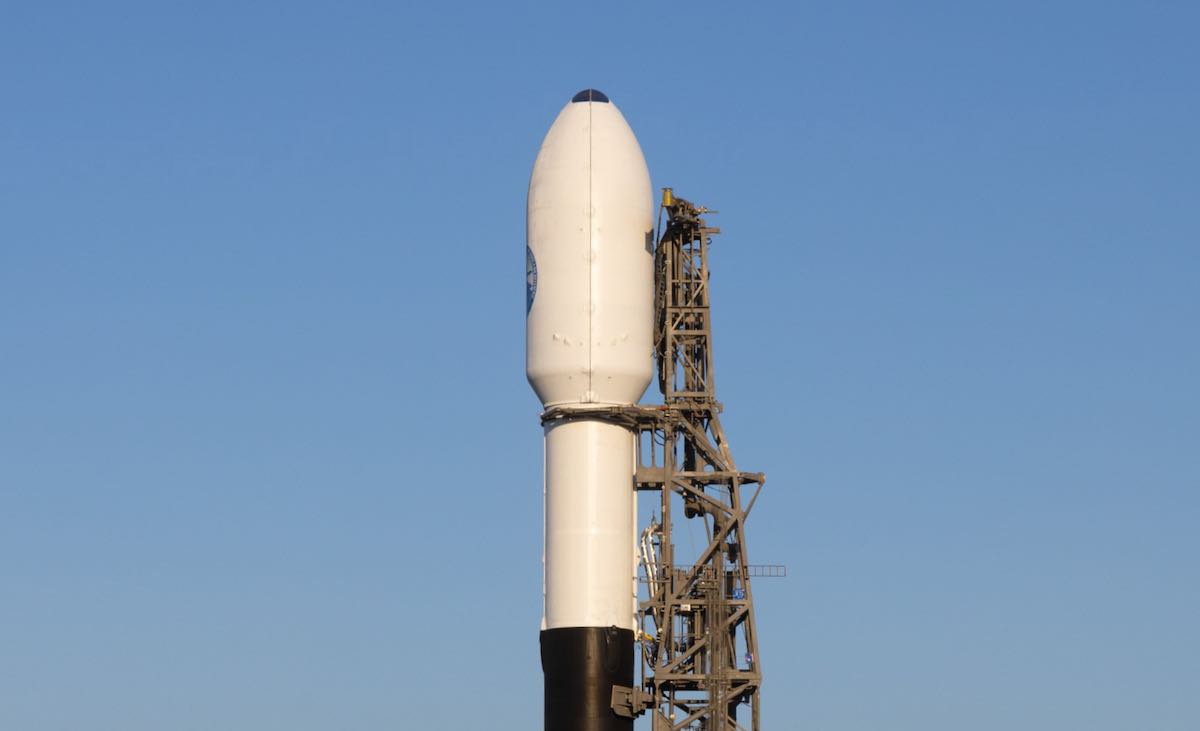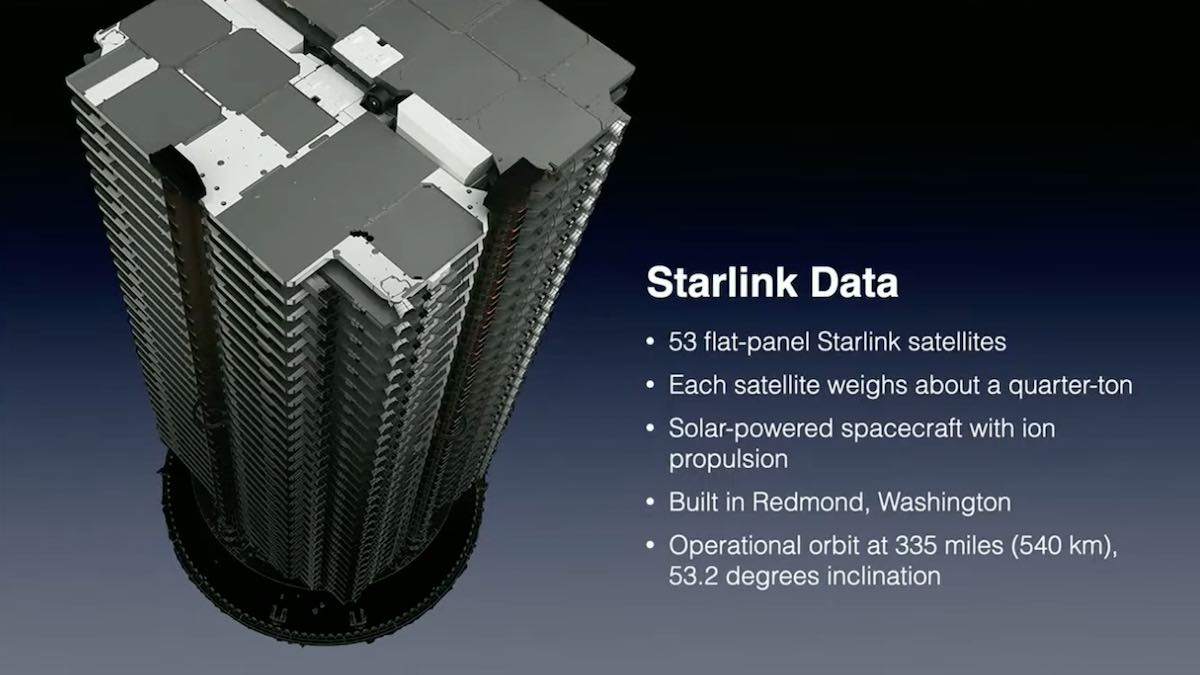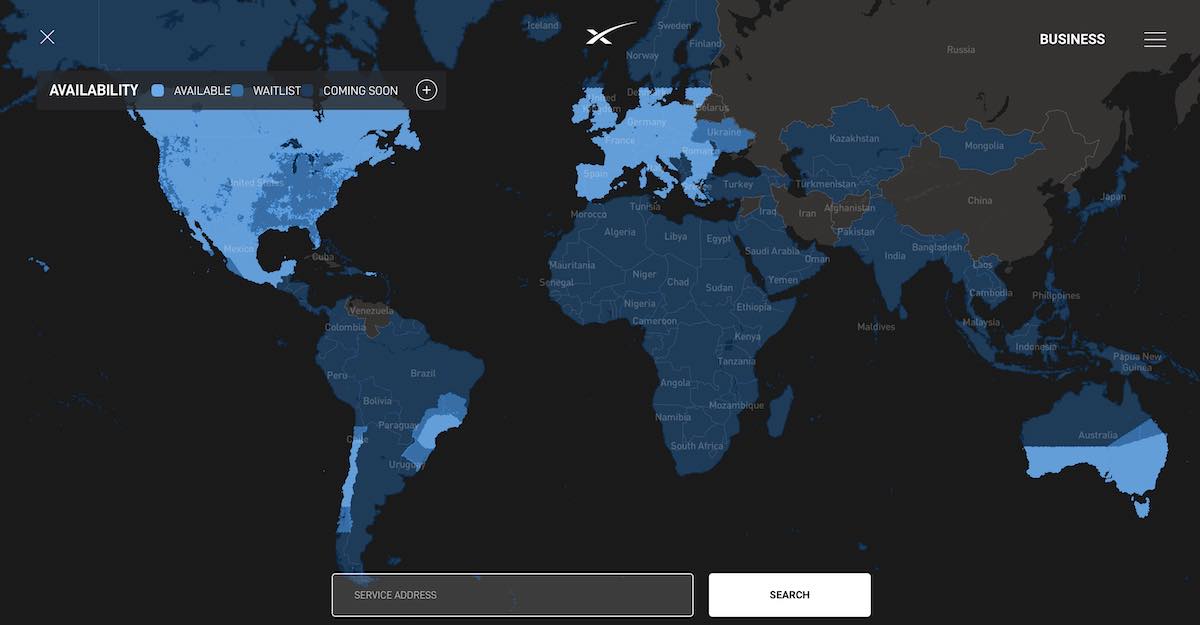
Weather permitting, SpaceX teams in California and Florida plan to launch two Falcon 9 rockets Friday and Saturday, each hauling 53 more Starlink satellites to join the company’s global broadband network.
The missions will mark the 19th and 20th SpaceX missions of the year, keeping up with the company’s average cadence of a little more than one launch per week since the beginning of the year.
First up is the launch of a Falcon 9 from Vandenberg Space Force Base in California. Liftoff of the 229-foot-tall (70-meter) launcher is set for 3:07 p.m. PDT (6:07 p.m. EDT; 2207 GMT) Friday from Space Launch Complex 4-East.
SpaceX’s team at Cape Canaveral is readying another Falcon 9 for liftoff Saturday at 4:33 p.m. EDT (2033 GMT). That mission will blast off from Space Launch Complex 40.
But the weather forecast is iffy for launch Friday from Vandenberg. The official weather outlook from the Space Force weather team at Vandenberg predicts a 40% chance of favorable conditions for liftoff. There’s an 80% chance of good weather for launch from Cape Canaveral on Saturday.
The launch from Vandenberg, named Starlink 4-13, will head southeast on a trajectory hugging the coast of Southern California and Baja California. The first stage booster, tail number B1063, will detach from the upper stage of the Falcon 9 about two-and-a-half minutes after liftoff to head for an offshore landing on SpaceX’s drone ship “Of Course I Still Love You” parked in the Pacific Ocean.
The reusable booster stage is set for launch on its fifth flight, following previous missions carrying the Sentinel-6 Michael Freilich oceanography satellite, NASA’s DART asteroid deflection experiment, and two Starlink missions. All of the booster’s flights have launched from Vandenberg.
The Falcon 9’s upper stage will shut off its Merlin-Vacuum engine nearly nine minutes after launch, then coast halfway around the world before a brief one-second restart to maneuver into a more circular orbit.
About 62 minutes after liftoff, the Falcon 9’s upper stage will deploy 53 flat-packed Starlink internet satellites into an orbit about 193 miles (310 kilometers) above Earth, at an inclination of 53.2 degrees to the equator.

The Falcon 9 launch from Cape Canaveral, numbered Starlink 4-15, will target the same orbital altitude and inclination. The trajectory for Saturday’s launch will head northeast from Florida’s Space Coast, following a similar timeline as the flight from Vandenberg.
The first stage on Saturday’s flight is a new booster, tail number B1073. It just the second new Falcon 9 booster to join SpaceX’s rocket fleet this year, and the first time a Starlink mission has utilized a Falcon first stage fresh from the factory in Hawthorne, California.
The missions Friday and Saturday will be the 45th and 46th SpaceX missions primarily dedicated to deploying satellites for the Starlink internet network.
The launch from Vandenberg will raise the total number of Starlink satellites launched to more than 2,500 spacecraft. Once the back-to-back launches are completed, SpaceX will have launched 2,600 Starlink satellites, including test units no longer in service.
More than 2,200 Starlink satellites are currently in orbit and working, according to an analysis by Jonathan McDowell, an astrophysicist who tracks spaceflight activity. That’s about half of SpaceX’s planned first-generation network of roughly 4,400 Starlink satellites.
The 4,400 satellites will be spread among five different orbital “shells” at different altitudes and inclinations. SpaceX, founded and led by Elon Musk, has signaled it eventually intends to launch as many as 42,000 satellites.
The network beams high-speed, low-latency internet signals around the world, reaching consumers, underserved communities, and other potential users like the U.S. military. SpaceX says the Starlink network is now available to consumers in 32 countries.

“I think what’s neat here at SpaceX is we have individual teams that are following all these activities, and they’re focused on their individual piece, and each one of them works on their own area,” said Bill Gerstenmaier, SpaceX’s vice president of build and flight reliability, in a press briefing May 6. “We still share information across with each other, and that helps us ensure that the spacecraft are safe.
Gerstenmaier, a former NASA program manager, said SpaceX’s blistering pace of Starlink missions helps collect data to improve the reliability of other flights, such as crew launches. Astronaut missions on SpaceX’s Dragon spacecraft also launch on Falcon 9 rockets.
“When we fly these extra Starlink launches, we actually learn stuff that we can then take and inform the crew flights, and make sure that the Falcon 9s associated with the crew flights are actually better than they would have been if we would not have flown those Starlink flights,” he said.
“I think this is a great time to be in spaceflight, to think we’re poised well as a company to support these multiple activities,” Gerstenmaier said. “Our heads are not swiveling around. We’re really focused on each individual activity, and we can accomplish them one at a time.”
Email the author.
Follow Stephen Clark on Twitter: @StephenClark1.
